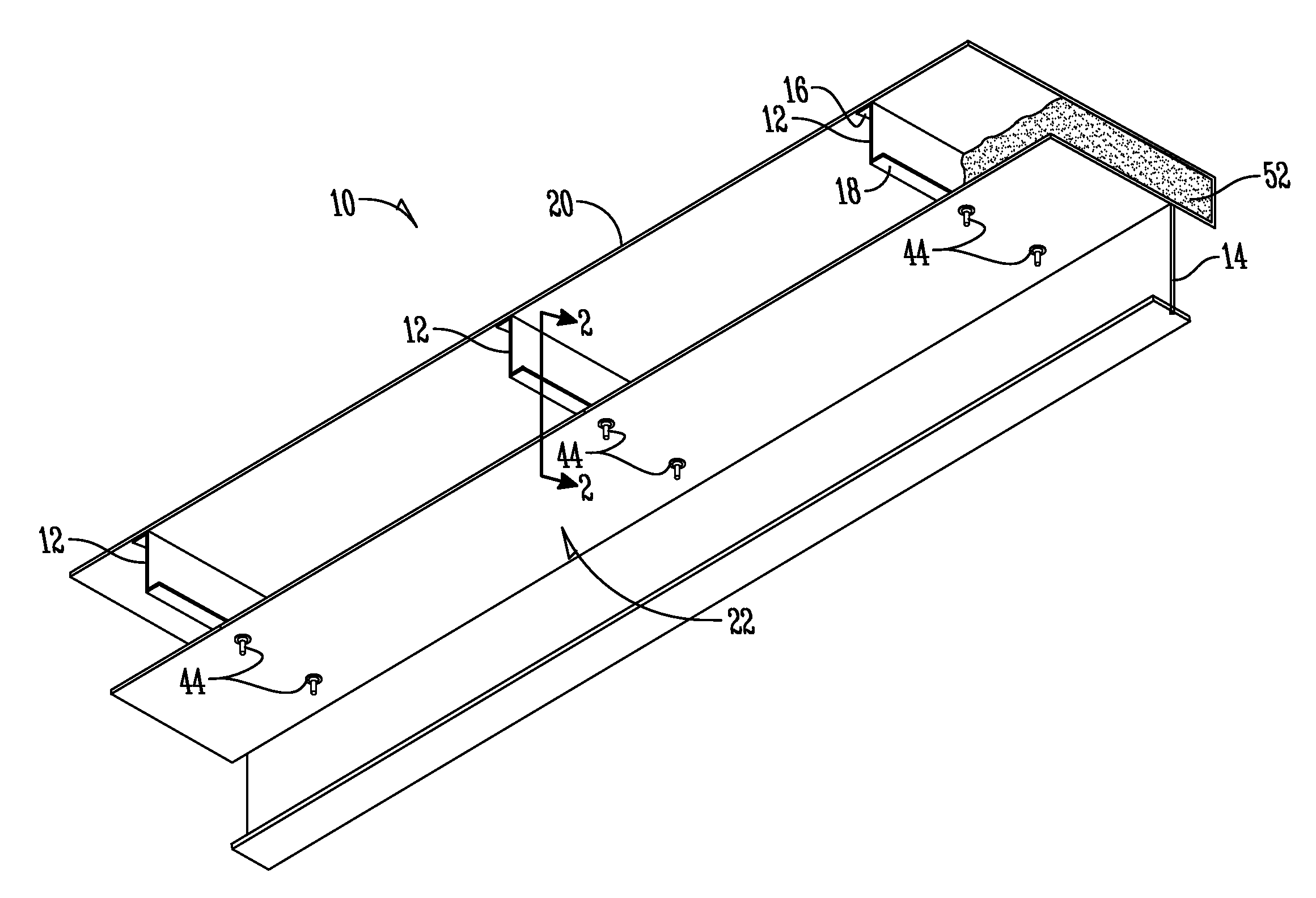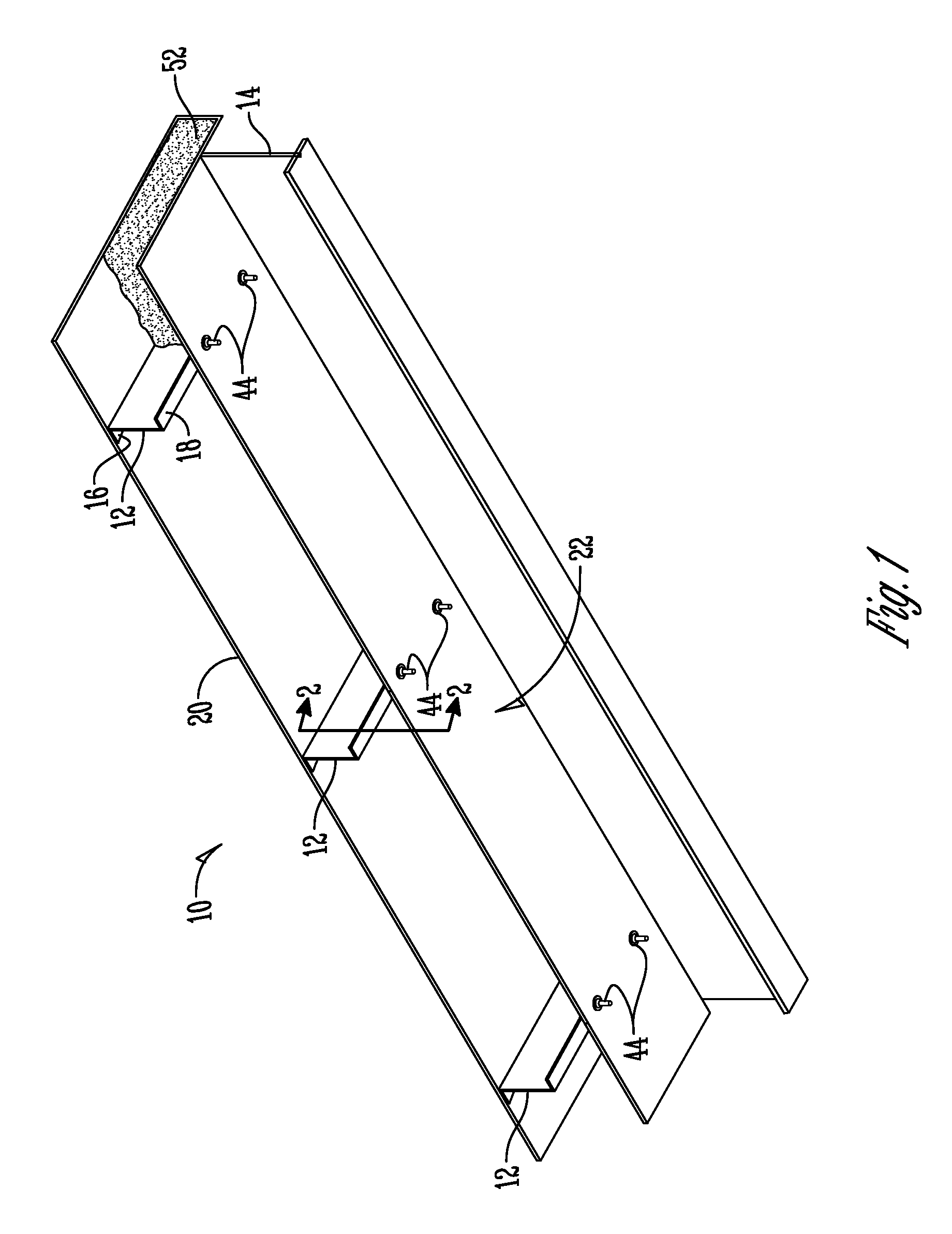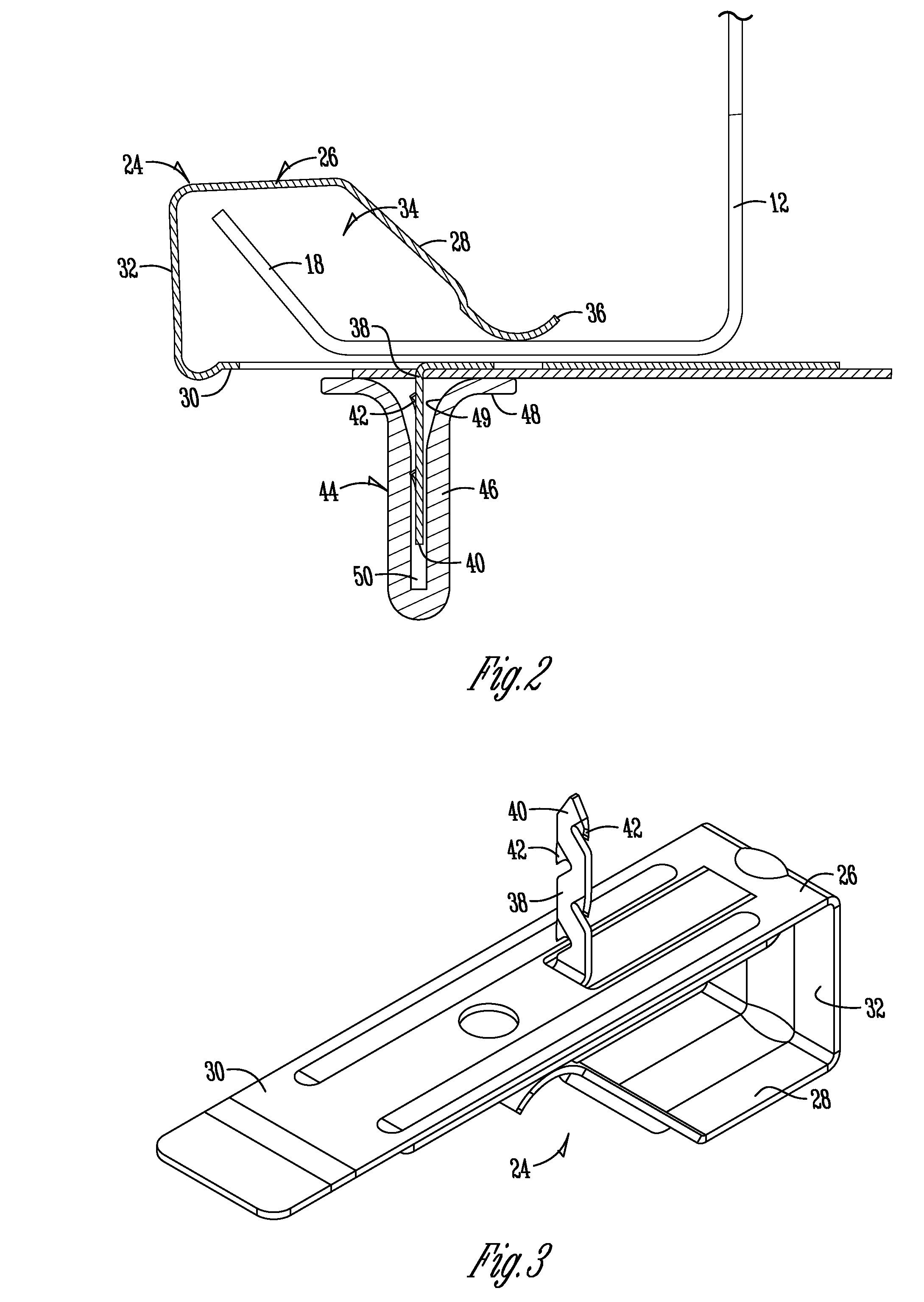Purlin clip for blown-in insulated ceilings
a technology of insulated ceilings and purlins, which is applied in the direction of ceilings, roofing, covering/linings, etc., can solve the problems of reducing the r-value, reducing the efficiency and effectiveness of controlling temperature in such metal buildings, and reducing the heating and cooling costs. , to achieve the effect of reducing or eliminating thermal conductivity or shorting, and reducing the risk of blown
- Summary
- Abstract
- Description
- Claims
- Application Information
AI Technical Summary
Benefits of technology
Problems solved by technology
Method used
Image
Examples
Embodiment Construction
[0021]In FIG. 1, reference numeral 10 generally designates the insulated roof and ceiling structure of a metal building. The ceiling 10 includes a plurality of spaced apart framing members 12, commonly known as purlins, supported on I-beams or other structural framing 14. The purlins 12 are spaced apart and parallel to one another and generally have a Z-profile, as seen in FIG. 1, or a C-profile. Each purlin 12 includes an upper flange 16 and a lower flange 18. A roof deck 20 is attached to the upper flange 16 of the purlins 12 using conventional fasteners (not shown). The deck 20 may be flat or corrugated metal. The purlins 12, I-beams 14, and roof deck 20 are conventionally constructed. The lower ceiling is a fabric sheet or membrane 22. The membrane 22 is secured to the lower flange 18 of the purlins 12 using a plurality of the improved purlin clips 24 of the present invention. In the industry, the ceiling membrane is known as a scrim, and is preferably a tear-resistant material....
PUM
 Login to View More
Login to View More Abstract
Description
Claims
Application Information
 Login to View More
Login to View More - R&D
- Intellectual Property
- Life Sciences
- Materials
- Tech Scout
- Unparalleled Data Quality
- Higher Quality Content
- 60% Fewer Hallucinations
Browse by: Latest US Patents, China's latest patents, Technical Efficacy Thesaurus, Application Domain, Technology Topic, Popular Technical Reports.
© 2025 PatSnap. All rights reserved.Legal|Privacy policy|Modern Slavery Act Transparency Statement|Sitemap|About US| Contact US: help@patsnap.com



